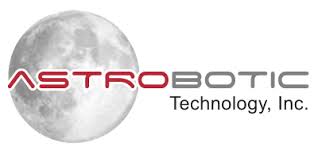Part 2 of 2 Parts (Please read Part 1 first)
The AMF has already sent archived text into space. When Elon Musk launched his Tesla Roadster into space, the entire text of Isaac Asimov’s Foundation Trilogy was inscribed on tiny digital storage devices called Archs and placed into the Roadster before launch. This series of novels inspired many readers to choose careers in the social and physical sciences.
Space is a very harsh environment and storing data safely for the long term is difficult. There are bursts of intense radiation that could damage just about any storage media. Temperatures vary over such an extreme range that storage media could be damaged and corrupted. For the Roadster launch, the mineral quartz was chosen as the storage media. The AMF used a laser to burn tiny holes into small quartz disks about the size of a U.S. quarter to create what is called 5D optical storage. Beyond the three spatial dimensions, 5D storage also utilizes the size of the hole and its shape to encode information.
For the Peregrine project, the AMF chose the element nickel for the storage media. Squares of pure nickel that are thinner than a human hair and about the size of a postage stamp will be used. Spivack says, “Nickel is an element that doesn’t corrode, lasts basically forever in space, and cosmic rays won’t hurt it.” Lasers will etch the information into the surfaces of the sheets of nickel. Each sheet can hold up to sixteen thousand pages of text. The text on the sheets can be read with any 1000X optical microscope. As many as fifty million pages of text will be sent on the Peregrine.
The AMF intends to send additional archives to the Moon as time passes. They are also going to create a Mars Library and additional libraries for other locations in the Solar System. They want to distribute such archives as widely as possible to increase the chances that they will survive far into the future. Eventually, the AMF intends to connect Arch Libraries through a “decentralized read-write data sharing network that spans the Solar System.”
The AMF says that there will also be a way for the public to get involved and help choose what is sent. They will allow people to make donations to have specific information included in the Archives. They have also promised that they will not exert any censorship over the information that people want to include. The AMF says that the reason that they are not emphasizing science and technology in their data sets is because they assume that any aliens with sufficiently advanced technology to get to our solar system from a planet around another star would have scientific and technical knowledge far above ours. It is also assumed that they would be most interested in our cultures.
Alien cultures may chose to immortalize their cultures and knowledge by creating something like the Archs from the AMF. One possibility would be to create self-replicating archival spacecraft which would travel to other star systems and create more copies of themselves to spread their information further. It is estimated that such a plan could see every star in the Milky Way visited within ten million years. Perhaps such archives exist in our solar systems just waiting to be discovered.
